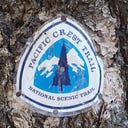How To Add Custom Icons To Your Flutter Application
When you want to add some style to your application, you look for ways to make your UI stand out. Whether it is using a specific font or a different color palate, we want to make the user feel attracted to our UI. One such customization has to do with icons. If you are a mobile developer, regardless of the platform you develop for, there is a straight forward process to adding icons to your application. In Flutter, it’s not that complicated, but there are some things you should be aware of so that you don’t make time costly mistakes.
Application Launcher Icon
Instead of using the generic application icon Flutter provides, you can create your own. To do that, we will need to use a package called Flutter Launcher Icons. We’ll go through creating one step by step.
This is how your launcher icon looks by default:
Let’s assume we want this image to be our application launcher icon:
- Add the image you would like your icon to be inside your project under the assets folder (if you don’t have an assets folder, create one)
2. Add the dependency to your pubspec.yaml file under dev_dependencies:
3. Add this configuration inside your pubspec.yaml file:
4. The flutter_icons configuration has several keys to alter what is going to be rendered and for which platform.
- android/ios - specify whether you want to generate an icon for that platform. You can also write the file name instead of true
- image_path - the path to the asset you wish to make into the application launcher icon. For example, assets/doughnut.png”
There are more configurations available, but we won’t delve into them here. You can find out more by going here.
5. Run flutter pub get in the terminal or click Pub get inside the IDE
6. Run the command below in the terminal:
Run your application and you should see that the launcher icon has changed
Custom Icons
We will be able to generate custom icons through FlutterIcon.com. It allows us to either:
- Upload a SVG that gets converted into an icon
- Choose out of a huge selection of icons from a different set of icon packages
☝️ There is a package called FlutterIcon that has all of the icons shown, but due to it’s heavy size, it is recommended to only choose the icons that you need and not use it
Let’s demonstrate how to import custom icons into your application using this website.
Imagine we have the following form in our application:
You can see that we used icons for each TextFormField. Below is the code for the first TextFormField:
How about we change the first TextFormField’s icon into something more relevant?
On FlutterIcon.com:
- Choose the icons that you desire/upload a SVG file
- Give a meaningful name to your icon class (We’ll call our class CustomIcons)
- Press Download
In the .zip folder that you downloaded, there are several files:
- A fonts folder with a TTF file with the name of the class you chose
- A config.json file - used to remember what icons you chose
- A dart class with the name of the class you chose
Inside your project, import the .ttf file into a folder called fonts under the root directory. It should look like this:
- Place the .dart class inside your lib folder
- If you take a look inside the dart file you will see something similar (you might see more IconData objects if you chose more than one icon to download):
- Add the following to your pubspec.yaml file:
- Run flutter pub get in the terminal or click Pub get inside the IDE
- Go to the place where you want to use your custom icons and use it in this manner:
Troubleshooting
If your custom icons are showing up as squares with X’s in them, something is not right. You might also see in the logger the following warnings:
This could be from several reasons:
- Make sure your pubspec.yaml file is valid. Meaning there are no extra spaces, indention, etc. You can use this tool for it
- Make sure that you have correctly referenced your font in your pubspec.yaml file
- Make sure that you have placed your .ttf file inside a fonts directory under the root directory of your project (not inside the assets directory)
- Uninstall your application and reinstall it on your device
If you’d like to take a look at a real application using both types of icons, you can check it out here:
And you can see the source code here:
Follow Flutter Community on Twitter: https://twitter.com/FlutterComm

